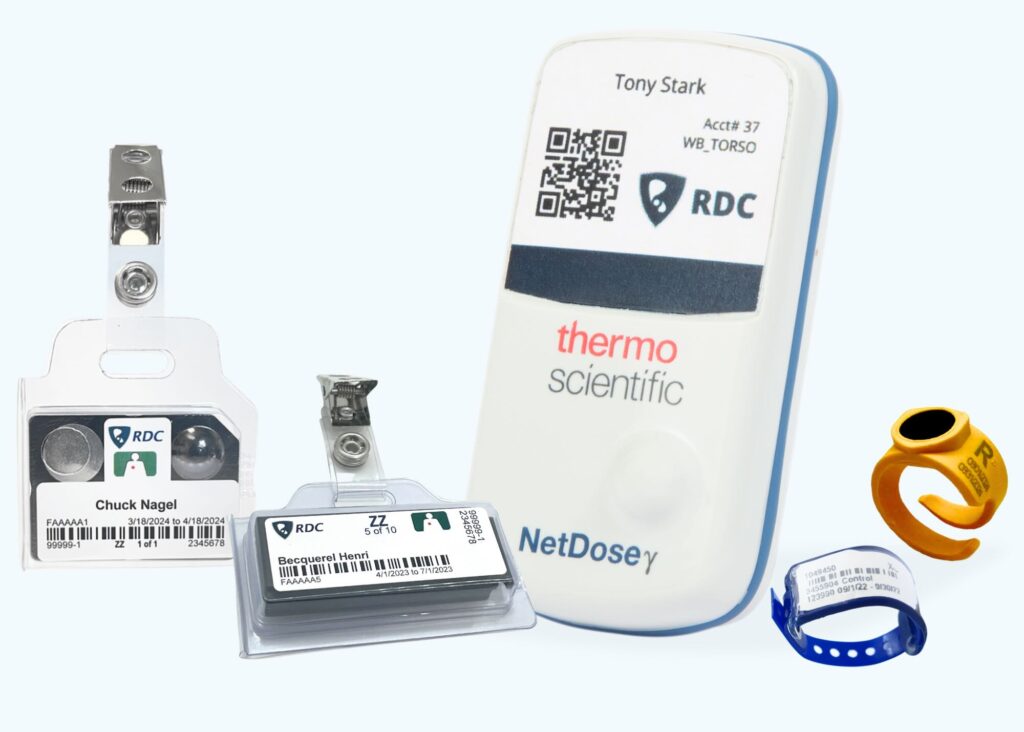
Remember: The Nuclear Regulatory Commission (NRC) & State Regulations require organizations to use NVLAP-accredited services to meet your compliance reporting needs.
Radiation Detection Company’s monitoring solutions are NVLAP-accredited [Lab Code 100512-0]
Helpful Tip: A good place to find information about the dosimeters you need is on your Radioactive Materials License.
This is determined by the radiation type and range you are exposed to based on the equipment you use.
Helpful Tip: Locate the label on your radiation emitting device to determine what type of radiation is being emitted to make sure you’re covered.


It is recommended that any employee working with or around radiation be monitored for chronic radiation exposure. Federal requirements state that individual personnel monitoring is required if the dose received for any given category is likely to exceed 10% of the Dose Limit in 1 year.
How often you exchange your badges will determine how often you receive a dose report. Below is a general rule of thumb, but refer to your Radioative Materials License for more specific requirements.
Fetal Badges should always be exchanged monthly to receive a dose report.
*Remember to return your badges at the end of each exchange period to get your dose report!

Radiation safety & compliance depend on timely accurate exposure reports – backed by customer support you can trust.
*With Rush order delivery option.
Need More Time? Email Yourself Instructions
© 2025, Radiation Detection Company